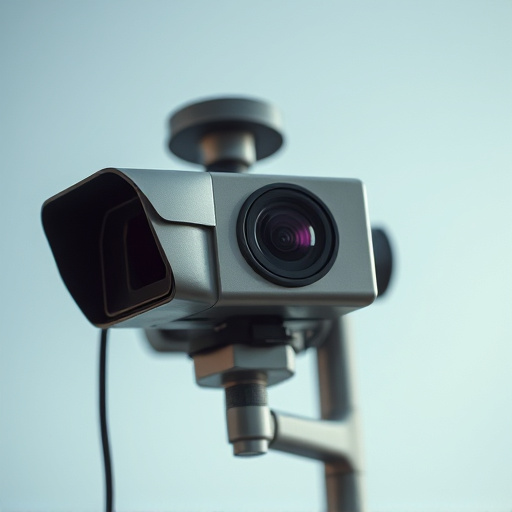Dummy cameras with blinking lights have gained popularity as an affordable and effective security solution for homes and businesses. Their realistic appearance and strategic placement deter intruders by mimicking surveillance activity without complex installations. However, they may be recognized by experienced criminals and power instability can reduce their effectiveness. High-quality models offer authentic details, enhancing deception and deterrence. Strategic placement in high-traffic areas combined with regular repositioning creates an efficient security network. Legal considerations regarding privacy are crucial; dummy cameras avoid footage capture but maintain ambiguity, best used as deterrents or integrated into a larger surveillance system.
“Uncover the power of indoor surveillance with our in-depth review on dummy cameras with blinking lights. Explore the intricate world of fake surveillance systems designed to deter crime and protect privacy. From advanced technology and realistic design to strategic placement, we demystify what works best.
Discover how these innovative devices can enhance security without compromising ethics, as we navigate legal considerations and privacy concerns. Prepare to transform your indoor spaces with effective, yet discreet, dummy cameras.”
- Dummy Cameras: A Comprehensive Overview
- Blinking Lights: Visual Deterrence or Red Flag?
- Realistic Design: Quality vs. Deception
- Placement Strategies for Effective Surveillance
- Legal Considerations: Privacy and Use Cases
Dummy Cameras: A Comprehensive Overview
Dummy cameras, often featuring blinking lights, have become a popular choice for homeowners and business owners looking to enhance their security without breaking the bank. These simulated surveillance devices offer an affordable alternative to real security systems, yet they serve a significant purpose in deterring potential intruders. By strategically placing these realistic-looking dummy cameras around properties, individuals can create the illusion of heightened security, thereby reducing the likelihood of crime.
The blinking lights on these dummy cameras play a crucial role in their effectiveness. The intermittent light patterns mimic the activity of genuine surveillance equipment, catching the attention of anyone attempting to trespass. This simple yet clever design has led to an increase in demand for such products, as they provide a cost-effective solution for those seeking to protect their assets without complex installations.
Blinking Lights: Visual Deterrence or Red Flag?
The use of dummy cameras with blinking lights has become a popular strategy for deterring potential intruders, often marketed as an effective and affordable security solution. These devices mimic real surveillance systems by displaying periodic flashes of light, sending a clear message to would-be thieves that they’re being watched. However, while the visual deterrent effect is undeniable, it’s not without its drawbacks.
The intermittent blinking pattern can sometimes act as a red flag for criminals, especially those familiar with security tactics. The sudden bursts of light may alert intruders to the presence of a surveillance system, prompting them to take alternative routes or even trigger an alarm out of caution. Moreover, the effectiveness of dummy cameras relies heavily on their placement and the environment they’re designed to protect. Ill-positioned lights or areas with frequent power outages could render these visual deterrents less credible, making it crucial to consider both practical aspects and potential false alerts when evaluating indoor fake surveillance systems.
Realistic Design: Quality vs. Deception
When it comes to indoor fake surveillance systems, one key aspect to consider is the realistic design. While the primary function is to deter potential intruders, the visual appeal and deception level can significantly impact their effectiveness. High-quality dummy cameras with blinking lights not only look authentic but also enhance the overall security ambiance of your space.
However, it’s essential to strike a balance between quality and deception. Lower-grade fake surveillance systems may appear convincing at first glance but often lack the intricate details that make real cameras so effective. Top-tier dummy cameras, on the other hand, are meticulously crafted with realistic features like lens openings, subtle markings, and even blinking lights that mimic the movement of a genuine camera, providing a more compelling deception.
Placement Strategies for Effective Surveillance
Placing surveillance systems strategically is key to enhancing security and preventing potential threats. One innovative approach gaining popularity is utilizing dummy cameras with blinking lights. These devices serve as visual deterrents, mimicking real security equipment while offering a cost-effective solution. Positioning them in visible areas like entry points, rooftops, or near valuable assets can significantly discourage intruders.
For optimal results, consider environments with high foot traffic or sensitive spaces requiring constant surveillance. Blinking lights add an extra layer of realism, making it harder for intruders to identify weak points. Regularly changing their positions and pairing them with genuine cameras in other areas creates a comprehensive security network, ensuring both effectiveness and cost efficiency.
Legal Considerations: Privacy and Use Cases
When considering indoor surveillance systems, it’s crucial to understand legal considerations, especially regarding privacy. In many regions, the use of cameras in private homes is subject to strict regulations. Dummy cameras with blinking lights are an interesting option for those looking to enhance security while maintaining privacy. These devices mimic real cameras but do not capture or transmit any footage, making them a legal gray area in some places.
It’s essential to research local laws and understand the context in which these fake surveillance systems can be used. While they may provide peace of mind and deter potential intruders, using them for invasive monitoring or recording without consent could lead to legal repercussions. Different use cases include setting off a camera’s blinking light as a deterrent during suspicious activities or using them as part of an overall security system that relies on real cameras for actual surveillance.
In conclusion, while indoor fake surveillance systems, particularly dummy cameras with blinking lights, offer visual deterrence, their effectiveness hinges on strategic placement and legal considerations. Realistic design quality varies, impacting deception levels. Understanding privacy laws and intended use cases is paramount to harnessing these systems responsibly. By integrating these strategies, homeowners and businesses can enhance security while navigating the ethical landscape of indoor surveillance.
